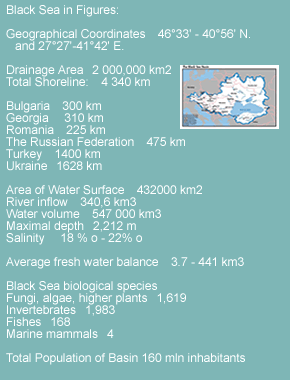
|
|
The Istanbul (Bosphorus) Straits has a two layer flow, carrying about 300 cubic kilometres of seawater to the Black Sea from the Mediterranean along the bottom layer and returning a mixture of seawater and freshwater with twice this volume. The shelf occupies a large area in the north-western part of the Black Sea , where it is over 200 km wide and has a depth up to more than 150 meters. In other parts of the sea the shelf has a depth of less than 100 m and a width of 2.2 to 15 km. Near the Caucasian and Anatolian coasts the shelf is only a narrow intermittent strip iin the upper layer. |
|
|
For this reason, the Black Sea is very vulnerable to pressure from land based human activity and its health is equally dependent from the coastal and non-coastal states of its basin. |
© BSERP, 2005 |



